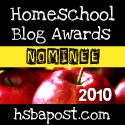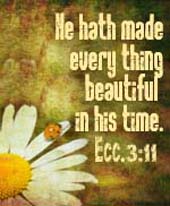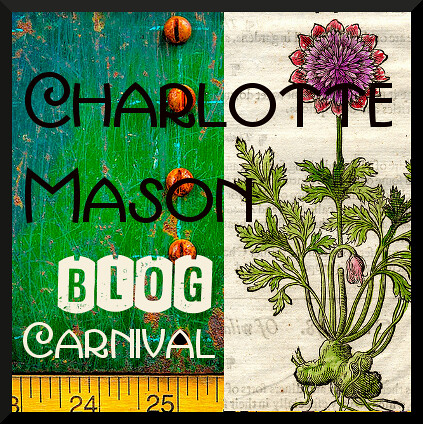There's been
some talk over on the AOlist about how to incorporate narration into a child's foreign language learning experience. Sometimes this seems like an impossibly enormous leap to make, especially if we as parents are not fluent in the language being studied!
Though not necessarily
easy, I think it is quite possible... especially when taken little by little. Narration skills are definitely invaluable for learning language!
My children have spent a good amount of time in Peru, where Spanish is the main language spoken. However, as we homeschool, they have had much less of an opportunity to master the language, as they undoubtedly would have had, had they been completely immersed as Micah and I were in the beginning. Did you know that you can live in a foreign country and NOT be immersed? Well, it's possible. :S This just means that we have to work at Spanish with our kids just like the average Joe even though we both speak Spanish and we live in a Spanish speaking country... who'd a thought?!
No matter where you live, or what languages you already speak, learning a new one requires work. You can't expect to just pick it up by listening to CDs or even hanging out with native speakers. Effort is required to learn it well. And the complicated thing about it is, at first there are so MANY aspects to learning it well! Pronunciation, verb conjugations, masculine and feminine articles, reversed sentence structure, etc, etc. On the other hand, the encouraging thing is, just as we continue to learn and polish our mother tongue, English, we remember that we will never stop learning our second and third languages as well. So, we can throw the expectation for perfection right out the window. We must be diligent and do our very best, we aspire to be effective communicators, we strive for excellence, but we can let go of that elusive perfection... ahhhh. yes. now, that's better, isn't it? :)
So, learning a new language is something that's somewhat complicated seeing as there are so many things to learn seemingly all at once. However, we don't really have to be overwhelmed by it! We just slowly and regularly get into the habit of exposing ourselves and our children to the language, little by little. We hear it spoken, we look at it written, we listen to CDs, we watch DVDs (using the language option), and eventually we actually study it! We build on the things that we already know, new lights come on; and, it can be really fun! :)
So, narration.
For those of us implementing a Charlotte Mason education using narration as a key ingredient, this idea may seem really difficult. After all, many of our children have struggled with narration in English! ;) But, narration doesn't have to be difficult or dreaded. It's kind of a natural thing! ;) Remember, narration is retelling what we've just heard.
Here's what Charlotte says:
"Children in Form IIB have easy French Lessons with pictures which they describe, but in IIA while still engaged on the Primary French Course children begin to use the method which is as full of promise in the teaching of languages as in English, that is, they are expected to narrate the sentence or paragraph which has been read to them. Young children find little difficulty in using French vocables, but at this stage the teacher should with the children's help translate the little passage which is to be narrated, then re-read it in French and require the children to narrate it. This they do after a time surprisingly well, and the act of narrating gives them some command of French phrases as far as they go, much more so than if they learnt the little passage off by heart. They learn French songs in both divisions and act French Fables (by Violet Partington) in Form IIA. This method of closely attentive reading of the text followed by narration is continued in each of the Forms. Thus Form II is required to "Describe in French, picture 20." "Narrate the story Esope et le Voyageur." Part of the term's work in Form III is to "Read and narrate Nouveaux Contes Français, by Marc Ceppi." Form IV is required amongst other things to "Read and narrate Moliere's Les Femmes Savantes." Forms V and VI are required to "Write a résume' of Le Misanthrope or L'Avare," "Translate into French, Modern Verse, page 50, 'Leisure.'" vol 6 pg 212
So, using the words made available to them the youngest were to narrate a picture. Hmmmm. That sounds easy enough. Let's take this one for an example:
First, I talk about the picture, this gives them vocabulary that they may or may not have known, setting it out, as it were, on a shelf, giving them words to work with and to choose from.
"En este dibujo hay un payaso sentado en una banquita azul. Está tocando su flauta... ¿cuál canción está tocando? ¿puedes adivinar? Su cabello es muy crespo y tiene muchos colores. ¡Aha! ¡Hay un pajarito escondiéndose en su cabello! Tiene nariz roja y redonda como muchos de los payasos tienen. Parece que el gato verde con puntitos rojos está escuchado a la música..."
["In this picture there's a clown seated on a little blue stool. He's playing his flute... which song do you think he's playing? His hair is really colorful and curly. Hey! There's a little bird hiding in his hair! He has a red nose, like most clowns. It seems as if the spotted green cat is listening to the music..."]
Possible narrations:
Mya (3yo) pointing,
"¡Un payaso!" [a clown!]
"¡Un gato verde!" [a green cat!]
Siah (6yo)
Bria (7yo)
Cull (11yo),
"Hay un payaso tocando una flauta con pelo crespo de muchos colores. Hay un pajarito escondiéndose en su pelo, un gato verde con puntitas rojas escuchando y un sapito sentado en sus pies."
[A clown with colorful curly hair playing a flute. There's a little bird hiding in his hair, a green cat with red spots listening and a little frog sitting on his feet.]
For parents who are just learning themselves, the description will be much simpler. "Un payaso con una nariz roja" [A clown with a red nose]. Or if you're lucky enough to get your hands on some Spanish picture books, you may just be reading from whatever is written in the book, in which case, having already looked up unfamiliar words, you'll want to concentrate on your pronunciation and intonation of voice. ;) It's not as hard as it might seem, after a while. ;) really.
Later (for older students, or in our case, more advanced learners), the children were to narrate a story. This could go sentence by sentence if necessary, but I'm thinking that if you are advanced enough in the language to be able to read the story and your child understands anything about what you've read, then perhaps they'd be able to handle a paragraph at a time, using simple language. Admittedly, it takes some time to advance to the point where they'll be able to understand an entire story (even an entire paragraph). But, CM explains that the child isn't expected to understand ALL the words PERFECTLY before beginning narration. "
Young children find little difficulty in using French vocables, but at this stage the teacher should with the children's help translate the little passage which is to be narrated [into English]
, then re-read it in French and require the children to narrate it." So, let's take this section for example:
"Pablo escribió a los cristianos de Galacia sobre cómo debían adorar a Dios.
Ustedes son hijos de Dios por la fe. No hay diferencia entre el creyente judío y el creyente gentil; entre el creyente que es esclavo y el creyente que es libre; entre el hombre creyente y la mujer creyente. Una vez que se convierten en cristianos, ustedes son iguales. Todos son descendientes de Abraham y recibirán todas las bendiciones que Dios le prometió a él. Dios les ha dado el Espíritu Santo como prueba de eso, el Espíritu que clama a Dios y sabe que él es su Padre amoroso." ~ La Biblia en Un Año para niños, Rhonda Davies
Possible narrations:
Siah (6yo),
"Pablo predicó a los cristianos."
(Basically, at this stage, the beginner might just pick a phrase, remember it, repeat it to himself and then tell back that phrase... that´s okay to start with... he´s still learning to narrate!)
Bria (7yo),
"Pablo ha dicho a las personas de Galacia que Jesus les ama y que él que era cristiano, no hay diferentes, todos eran iguales.
[Pablo has said to the people in Galatia that Jesus loves them and that he who was a christian, there aren't any diferences, everyone was equal. *I don't usually make them aware that I'm making corrections, I just often quietly repeat what they've said (as if acknowledging what they've said) except using the correct verb conjugation while their giving their narration.]
CM mentions that the teacher and child work together to translate the passage to English. This helps with comprehension of new vocabulary at the same time concreting known vocabulary. The teacher then re-reads the passage in French (or other language), before the child is expected to narrate.
So, starting at the very beginning (it's a very good place to start!), we can lessen our expectations. Narration is really just retelling. So, if we have a very small vocabulary and we describe a picture with a very few words, then our children will narrate with a very few words... and that's perfectly fine for starting! We build on that, and they build too... learning, learning. Always learning. :)
Helpful Links:
My favorites picture books online in Spanish:
El Globo de Maria (SUPER EASY! nice illustrations)
El Caballito de Palo (Short and sweet. colorful illustrations, the clown above is from this story.)
The Royal Raven (in English, Spanish and Dutch! based on an Aesop's Fable, features a witch - please preview)
by Peruvian authors: (The last several are rather twaddle-ish... ;)
La Nube Rosa
La espada magica del Don Rodrigo
En las punas
El Amaru
El Condor
La Llamita Coja
For older children (w/ more advanced language skill):
Palma for children (biography of a famous Peruvian poet from the 1800s)
Others available in English, Spanish and French:
Que Desastre!
The Story of the Three Little Pigs
I Wouldn't Tell a Lie
Gol de Federico!
Waldo, One, Two, Three! (EASY!)
Denslow's Humpty Dumpty
Denslow's Three Bears
French songs:
Vieilles Chansons (
Old songs and ballads for children)
Some really great books for first reading/narration experiences (available in many languages)...
These are really great! There is no story, there is just a big picture in the center of the page, and all around the edges are images focusing on smaller parts of the bigger picture with the word in Spanish (or French, as the case may be). This makes it easy for speakers at different levels to talk about the picture... It could be as simple as, "Mira, hay una abeja!" or as advanced and eloquent as your vocabulary allows. ;)
Use these links, and I earn a commission! :) thank you.
Please feel free to add your thoughts and language experiences in the comments.
What you share will help us all! ;)
)and one for a woodwind instrument such as oboe or bassoon.


































